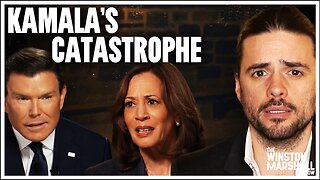Volume by Price - Defining Static Areas of Interest - Session II
#orderflow #daytrading #learnhowtotrade #sierrachart #volumebyprice
Frankly I consider Volume by Price to be a higher-level view of where orders flowed, by definition, Volume by Price is not true Order Flow. Volume by Price defines the basic structure of the market price action, or the areas of support and resistance based on accumulation of orders or lack of orders.
We must understand three primary items in a Volume by Price chart.
I. Point of Control (POC): The POC is the price at which the greatest number of contracts traded. The actual price with the highest volume. The theory is the POC is the point where more Traders agreed the price was fair.
a. You must understand this is the highest volume for the duration you have set on the profile. I.e.: if the profile is set for the session, then whatever is happening in the session to that time will be tabulated.
b. It’s not static. The POC is dynamic and moves as volume changes. When trades occur, if there are more trades at a higher or lower price than the current POC, the POC will move just as soon as there is 1 greater contract at a different price.
II. Low Volume Nodes (LVN): The low volume node is exactly what it says, the lowest volume point in your volume profile chart. Most notable occurrence surrounding the LVN is they clearly define:
a. Prices have broken above a previous high leaving the LVN or poor trading structure. This will often result in price returning to that area to repair the poor structure. Hence on an OHLC chart price breaks above a previous resistance point and then comes back to test that previous high, notably price will then resume the upward trend.
b. There are more LVNs below the market than above. As stated above the back filling usually evens out the structure.
c. LVNs have a higher value the longer the term.
i. Previous day LVNs has higher value than session LVNs
ii. Weekly LVNs have higher value that previous day LVNs
iii. Monthly LVNs have a higher value than weekly LVNs
d. Reasoning for higher value is directly related to the volume of trades below the LVN.
III. High Volume Node (HVN): Well, it sticks out more than a LVN and less than the POC, but they offer a hidden value. They show a higher volume of trades which essentially means you have a higher probability of back-and-forth market action and a higher probability of getting chopped up.
Let’s put this together with some chart examples to define the section above looking at the POC, LVN and HVN. It is critical to identify each zone to trade in and which to stay away from.
Daily Prep Workspace (Action Plan) Volume Profile
Putting things together and moving through our initial step in understanding Volume by Price (VbP). We will define the market context before we begin to read deeper into true Order Flow. This is our action plan phase.
Define your workspace. We work on a screen that presents real-time market generated information in a graphical presentation for the sole purpose of making informed decisions. That’s it. We do not trade here. The only reason to review this chart is to build our trading plan. Your workspace will be an extension of who you are as an individual Trader.
I have defined my workspace by constructing a 15 Minute chart with each bar represented by a VbP histogram. Then I hide the OHLC bars. Then step two is adding in the VbP study aligned to the right side of the chart. This should be set to show a VbP based on the bars on the chart. The image below is based on the ES, and I have identified POC, LVN and HVN areas. This is also done for the NQ but for this instructional series one chart can represent the market. The process is the same regardless of market.
-
 LIVE
LIVE
GamerGril
2 hours agoLFD! LOOKING FOR AN ABSTRACT DADDY! 😉 | SILENT HILL 2
339 watching -
 5:25
5:25
BuddyBrown
2 days agoThe "Disastrous" FOX NEWS Interview! | Buddy Brown
16.7K25 -
 DVR
DVR
Jewels Jones Live ®
1 day agoTRUMP DERANGEMENT SYNDROME | A Political Rendezvous - Ep. 96
21K12 -
 11:29
11:29
Space Ice
5 hours agoRings Of Power Season 2 Pt. 1 - You Owe Amazon An Apology - Best Movie Ever
20.5K12 -
 LIVE
LIVE
Tundra Gaming Live
3 hours ago $18.00 earnedThe $2500 Great Tundra Nation Get Together Giveaway Stream!!!
463 watching -
 1:05:06
1:05:06
Athlete & Artist Show
6 hours ago $7.88 earnedHIGH STAKES Sports Betting & Casino Games
28.5K13 -
 1:21:22
1:21:22
Tactical Advisor
6 hours ago$1900 Rifle Giveaway! | Vault Room Live Stream 007
93.8K20 -
 2:58:24
2:58:24
I_Came_With_Fire_Podcast
16 hours ago"The Mysteries of Indrid Cold, Alternative American History, and Whether JFK Deserved It"
40K4 -
 14:53
14:53
Winston Marshall
2 days agoYIKES...Did You See THIS?!
70.7K78 -
 8:09:08
8:09:08
PoisonTaco
11 hours agoCitizenCon 2954 DAY 1 - Rumble Watch Party
80.9K19